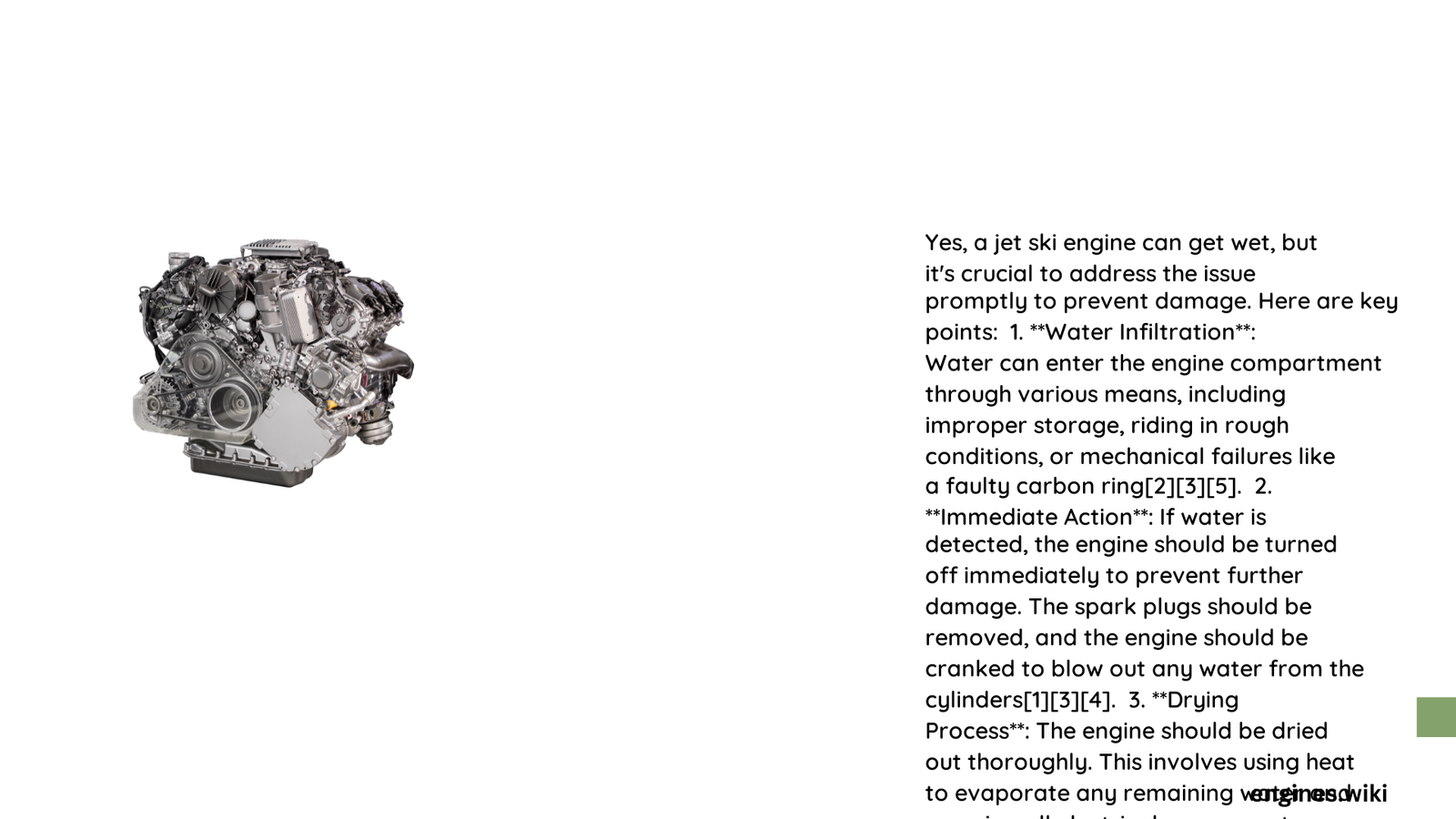Jet ski engines are designed to operate in water, but they aren’t completely waterproof. While these powerful machines are built to withstand aquatic environments, water intrusion can cause significant damage to internal components. Understanding how water interacts with jet ski engines is crucial for preventing costly repairs and maintaining optimal performance.
What Happens When Water Enters a Jet Ski Engine?
Water can infiltrate jet ski engines through multiple pathways, creating potential risks for mechanical failure. The consequences of water exposure depend on several factors:
How Do Cooling Systems Impact Water Intrusion?
Jet ski engines utilize two primary cooling system designs:
- Open-Loop Cooling Systems
- Common in Yamaha and Kawasaki models
- Direct water contact with engine components
-
Higher risk of water intrusion
-
Closed-Loop Cooling Systems
- Used by Sea-Doo
- Utilize heat exchangers
- Reduced water infiltration risk
| Cooling System Type | Water Contact Risk | Manufacturer Examples |
|---|---|---|
| Open-Loop | High | Yamaha, Kawasaki |
| Closed-Loop | Low | Sea-Doo |
What Are the Primary Water Entry Points?
Critical areas vulnerable to water infiltration include:
- Driveshaft bearing housing
- Carbon ring seals
- Air vents
- Exhaust system connections
- Electrical component interfaces
Can Water Damage Electrical Components?
Water exposure can severely impact electrical systems:
- Battery corrosion
- Short-circuit risks
- Carburetor damage
- Airbox moisture accumulation
How to Prevent Water-Related Engine Damage?
Protective strategies include:
- Regular seal inspections
- Proper storage techniques
- Immediate post-ride maintenance
- Using protective covers
- Avoiding aggressive riding conditions
What Are Potential Repair Costs?
Water damage can lead to expensive repairs:
- Engine replacement: $2,000 – $5,000
- Electrical component repair: $50 – $200
- Seal and gasket replacement: $100 – $500
Expert Maintenance Recommendations

How Should You Handle Water Exposure?
- Flush engine after saltwater use
- Check drain plugs regularly
- Use onboard bailer systems
- Store with proper ventilation
- Inspect seals and connections quarterly
What Warning Signs Indicate Water Damage?
Look for these potential indicators:
- Unusual engine noise
- Reduced performance
- Corrosion around electrical connections
- Difficulty starting
- Inconsistent acceleration
Technical Insights
Jet ski manufacturers design engines with water-resistant features, but they aren’t completely waterproof. The key is understanding limitations and implementing proactive maintenance strategies.
Professional Tips
- Never run engine without water circulation
- Follow manufacturer-specific guidelines
- Invest in quality protective equipment
- Perform regular professional inspections
Conclusion
While jet ski engines are engineered to operate in wet environments, water intrusion remains a significant risk. Proper maintenance, understanding cooling systems, and implementing protective measures are essential for long-term engine health.
